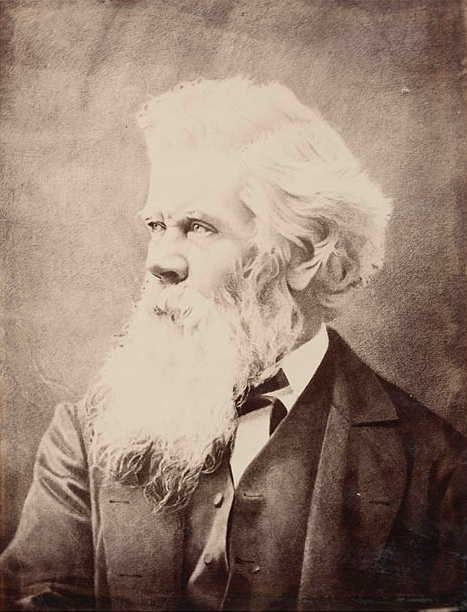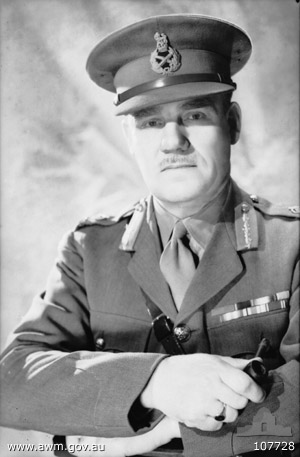|
1872 New South Wales Colonial Election
The 1872 New South Wales colonial election was held between 13 February and 28 March 1872. This election was for all of the 72 seats in the New South Wales Legislative Assembly and it was conducted in 52 single-member constituencies, six 2-member constituencies and two 4-member constituencies, all with a first past the post system. Suffrage was limited to adult white males. The previous parliament of New South Wales was dissolved on 3 February 1872 by the Governor, Lord Belmore, on the advice of the Premier, Sir James Martin. There was no recognisable party structure at this election; instead the government was determined by a loose, shifting factional system. Key dates Results References * See also * Members of the New South Wales Legislative Assembly, 1872–1874 * Candidates of the 1872 New South Wales colonial election {{DEFAULTSORT:New South Wales Colonial Election, 1872 1872 Events January–March * January 12 – Yohannes IV is crowned Emp ... [...More Info...] [...Related Items...] OR: [Wikipedia] [Google] [Baidu] |
New South Wales Legislative Assembly
The New South Wales Legislative Assembly is the lower of the two houses of the Parliament of New South Wales, an Australian state. The upper house is the New South Wales Legislative Council. Both the Assembly and Council sit at Parliament House in the state capital, Sydney. The Assembly is presided over by the Speaker of the Legislative Assembly. The Assembly has 93 members, elected by single-member constituency, which are commonly known as seats. Voting is by the optional preferential system. Members of the Legislative Assembly have the post-nominals MP after their names. From the creation of the assembly up to about 1990, the post-nominals "MLA" (Member of the Legislative Assembly) were used. The Assembly is often called ''the bearpit'' on the basis of the house's reputation for confrontational style during heated moments and the "savage political theatre and the bloodlust of its professional players" attributed in part to executive dominance. History The Legislative ... [...More Info...] [...Related Items...] OR: [Wikipedia] [Google] [Baidu] |
Governor Of New South Wales
The governor of New South Wales is the viceregal representative of the Australian monarch, King Charles III, in the state of New South Wales. In an analogous way to the governor-general of Australia at the national level, the governors of the Australian states perform constitutional and ceremonial functions at the state level. The governor is appointed by the king on the advice of the premier of New South Wales, and serves in office for an unfixed period of time—known as serving '' At His Majesty's pleasure''—though five years is the general standard of office term. The current governor is retired jurist Margaret Beazley, who succeeded David Hurley on 2 May 2019. The office has its origin in the 18th-century colonial governors of New South Wales upon its settlement in 1788, and is the oldest continuous institution in Australia. The present incarnation of the position emerged with the Federation of Australia and the ''New South Wales Constitution Act 1902'', which define ... [...More Info...] [...Related Items...] OR: [Wikipedia] [Google] [Baidu] |
1870s In New South Wales
Year 187 ( CLXXXVII) was a common year starting on Sunday (link will display the full calendar) of the Julian calendar. At the time, it was known as the Year of the Consulship of Quintius and Aelianus (or, less frequently, year 940 ''Ab urbe condita''). The denomination 187 for this year has been used since the early medieval period, when the Anno Domini calendar era became the prevalent method in Europe for naming years. Events By place Roman Empire * Septimius Severus marries Julia Domna (age 17), a Syrian princess, at Lugdunum (modern-day Lyon). She is the youngest daughter of high-priest Julius Bassianus – a descendant of the Royal House of Emesa. Her elder sister is Julia Maesa. * Clodius Albinus defeats the Chatti, a highly organized German tribe that controlled the area that includes the Black Forest. By topic Religion * Olympianus succeeds Pertinax as bishop of Byzantium (until 198). Births * Cao Pi, Chinese emperor of the Cao Wei state (d. 226) * G ... [...More Info...] [...Related Items...] OR: [Wikipedia] [Google] [Baidu] |
Elections In New South Wales
An election is a formal group decision-making process by which a population chooses an individual or multiple individuals to hold public office. Elections have been the usual mechanism by which modern representative democracy has operated since the 17th century. Elections may fill offices in the legislature, sometimes in the executive and judiciary, and for regional and local government. This process is also used in many other private and business organisations, from clubs to voluntary associations and corporations. The global use of elections as a tool for selecting representatives in modern representative democracies is in contrast with the practice in the democratic archetype, ancient Athens, where the elections were considered an oligarchic institution and most political offices were filled using sortition, also known as allotment, by which officeholders were chosen by lot. Electoral reform describes the process of introducing fair electoral systems where they a ... [...More Info...] [...Related Items...] OR: [Wikipedia] [Google] [Baidu] |
Candidates Of The 1872 New South Wales Colonial Election
This is a list of candidates for the 1872 New South Wales colonial election. The election was held from 13 February to 28 March 1872. There was no recognisable party structure at this election. Retiring Members * Archibald Bell MLA (Upper Hunter) * Arthur Dight MLA ( Windsor) * James Fallon MLA (Hume) * James Hart MLA ( Monaro) * Lewis Levy MLA (Liverpool Plains) * John Morrice MLA (Camden) * James Osborne MLA (Illawarra) * William Speer MLA ( West Sydney) * John Suttor MLA ( East Macquarie) * William Suttor MLA ( Bathurst) Legislative Assembly Sitting members are shown in bold text. Successful candidates are highlighted. Electorates are arranged chronologically from the day the poll was held. Because of the sequence of polling, some sitting members who were defeated in their constituencies were then able to contest other constituencies later in the polling period. On the second occasion, these members are shown in italic text. See also * Members of the New South Wales Legis ... [...More Info...] [...Related Items...] OR: [Wikipedia] [Google] [Baidu] |
Members Of The New South Wales Legislative Assembly, 1872–1874
Members of the New South Wales Legislative Assembly who served in the seventh parliament of New South Wales held their seats from 1872 to 1874. The 182 election was held between 13 February and 28 March 1872 with parliament first meeting on 30 April 1872. There were 72 members elected for 52 single member electorates, 6 two member electorates and 2 four member electorates. The maximum term of this parliament was 3 years. However the assembly was dissolved after 32 months. Henry Parkes was the premier for the duration of the parliament. The Speaker was William Arnold. See also *First Parkes ministry * Results of the 1872 New South Wales colonial election *Candidates of the 1872 New South Wales colonial election This is a list of candidates for the 1872 New South Wales colonial election. The election was held from 13 February to 28 March 1872. There was no recognisable party structure at this election. Retiring Members * Archibald Bell MLA (Upper Hunter ... Notes There was ... [...More Info...] [...Related Items...] OR: [Wikipedia] [Google] [Baidu] |
Parliament Of New South Wales
The Parliament of New South Wales is a bicameral legislature in the Australian state of New South Wales (NSW), consisting of the New South Wales Legislative Assembly (lower house) and the New South Wales Legislative Council (upper house). Each house is directly elected by the people of New South Wales at elections held approximately every four years. The Parliament derives its authority from the King of Australia, King Charles III, represented by the Governor of New South Wales, who chairs the Executive Council. The parliament shares law making powers with the Australian Federal (or Commonwealth) Parliament. The New South Wales Parliament follows Westminster parliamentary traditions of dress, Green–Red chamber colours and protocols. It is located in Parliament House on Macquarie Street, Sydney. History The Parliament of New South Wales was the first of the Australian colonial legislatures, with its formation in the 1850s. At the time, New South Wales was a British colo ... [...More Info...] [...Related Items...] OR: [Wikipedia] [Google] [Baidu] |
Somerset Lowry-Corry, 4th Earl Belmore
Somerset Richard Lowry-Corry, 4th Earl Belmore, (9 April 1835 – 6 April 1913), styled as Viscount Corry from 1841 to 1845, was an Irish nobleman and Conservative politician who served as Governor of New South Wales from 1868 to 1872. Background and education Born at Bruton Street in London, he was the eldest son of Armar Lowry-Corry, 3rd Earl Belmore and his wife Emily Louise Shepherd, youngest daughter of William Shepherd. Belmore succeeded his father in the earldom on 24 December 1845, at the age of only 10. He was educated at Eton and at Trinity College, Cambridge, from where he graduated with a Master of Arts in 1856. Career English government Belmore was elected as a Representative Peer for Ireland and sat in the House of Lords from January 1857 until his death. He served under the Earl of Derby as Under-Secretary of State for the Home Department from July 1866 to August 1867, and was then appointed Governor of New South Wales, on 22 August. He was sworn of the Privy ... [...More Info...] [...Related Items...] OR: [Wikipedia] [Google] [Baidu] |
New South Wales
) , nickname = , image_map = New South Wales in Australia.svg , map_caption = Location of New South Wales in AustraliaCoordinates: , subdivision_type = Country , subdivision_name = Australia , established_title = Before federation , established_date = Colony of New South Wales , established_title2 = Establishment , established_date2 = 26 January 1788 , established_title3 = Responsible government , established_date3 = 6 June 1856 , established_title4 = Federation , established_date4 = 1 January 1901 , named_for = Wales , demonym = , capital = Sydney , largest_city = capital , coordinates = , admin_center = 128 local government areas , admin_center_type = Administration , leader_title1 = Monarch , leader_name1 = Charles III , leader_title2 = Governor , leader_name2 = Margaret Beazley , leader_title3 = Premier , leader_name3 = Dominic Perrottet ( Liberal) , national_representation = Parliament of Australia , national_representation_type1 = Sen ... [...More Info...] [...Related Items...] OR: [Wikipedia] [Google] [Baidu] |
First Past The Post
In a first-past-the-post electoral system (FPTP or FPP), formally called single-member plurality voting (SMP) when used in single-member districts or informally choose-one voting in contrast to ranked voting, or score voting, voters cast their vote for a candidate of their choice, and the candidate who receives the most votes wins even if the top candidate gets less than 50%, which can happen when there are more than two popular candidates. As a winner-take-all method, FPTP often produces disproportional results (when electing members of an assembly, such as a parliament) in the sense that political parties do not get representation according to their share of the popular vote. This usually favours the largest party and parties with strong regional support to the detriment of smaller parties without a geographically concentrated base. Supporters of electoral reform are generally highly critical of FPTP because of this and point out other flaws, such as FPTP's vulnerabili ... [...More Info...] [...Related Items...] OR: [Wikipedia] [Google] [Baidu] |



